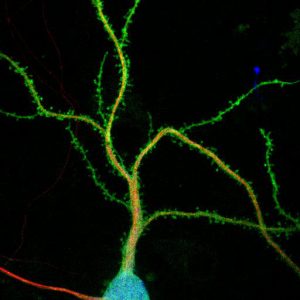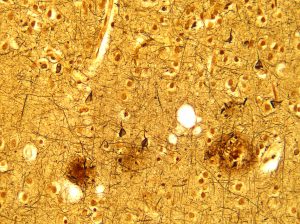
Our research focuses on understanding the molecular basis for Alzheimer’s disease and other age-related dementias. These investigations combine insights from human brain tissue donated by patients with age-related neurodegenerative diseases, studies in cell culture models, and molecular techniques to uncover new pathways involved in Alzheimer’s disease and other neurodegenerative diseases.
Tau has been implicated in regulating neuronal network activity in the brain and the removal of tau makes mice resistant to seizure activity. Our lab uses cell culture models to uncover the novel roles of tau in neuronal biology, with a focus on the interaction between tau and neuronal activity.
Tau commonly aggregates in the aging human brain, with high levels of tau aggregates associated with memory impairment in older adults. This condition has recently been termed Primary Age-Related Tauopathy (PART). Tau aggregated in PART show a similar morphology and distribution as tau aggregates in Alzheimer’s disease. We have found that high levels of tau aggregates in PART are associated with loss of synaptic markers in the CA2 region of the hippocampus, the memory center of the brain. Using advanced spatial transcriptomics, we identified a shared tau pathology transcriptional signature in PART and Alzheimer’s disease, suggesting a possible link between tau pathology in the two conditions. Our lab continues to use human tissue from PART and Alzheimer’s disease brains to investigate how tau can cause memory impairment in humans, but has also expanded our investigations into younger adults to better understand how Alzheimer’s and aging-related pathology first develops.


Alzheimer’s disease pathology is characterized by the accumulation of extracellular amyloid plaques, in addition to intracellular tau aggregates (called neurofibrillary tangles). In patients with Alzheimer’s disease, the progression of tau pathology correlates with cognitive decline, implying that tau aggregation may contribute to cognitive decline in Alzheimer’s disease. Our lab combines use of cell culture models and brain tissue from aging individuals and individuals with Alzheimer’s disease with advanced molecular biology techniques, including spatial transcriptomics and AI-enhanced image analysis. Our goals is to uncover molecular pathways contributing to tau pathology, with the ultimate goal of finding new potential therapeutic targets for Alzheimer’s disease patients.
